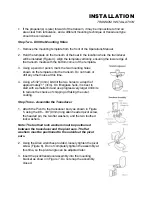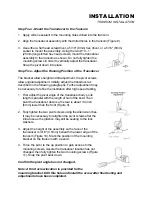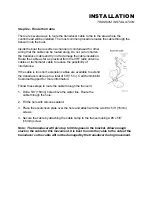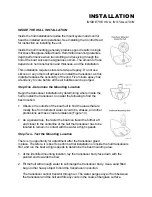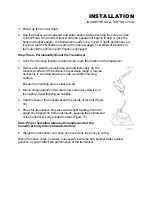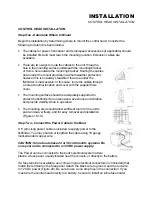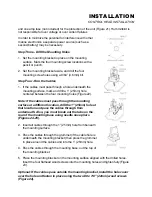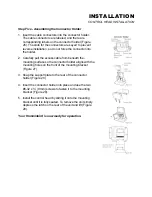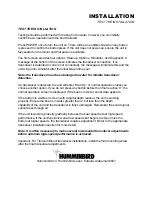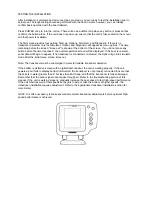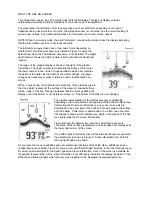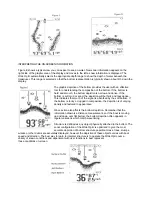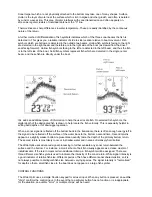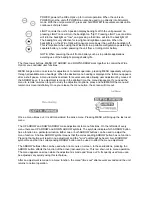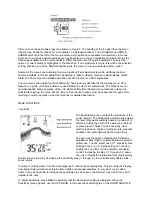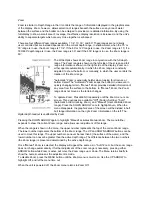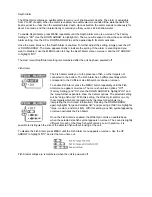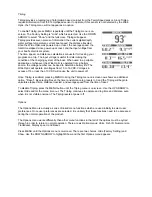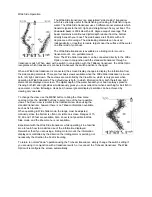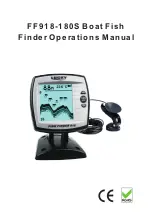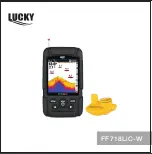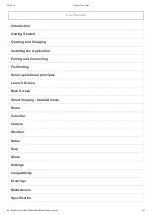
Sonar targets which are not physically attached to the bottom may take one of many shapes. Surface
clutter is the layer of water near the surface which is rich in algae and other growth, and often is aerated
by wind or wave action. This area of water interferes with sonar transmission and often appears on-
screen as regular clusters of individual dots near the "0" line.
Thermoclines are sharp differences in water temperature. These are easily identified by the continuous
nature of the return.
A further method of differentiation of fish symbols indicates which of the three sonar beams the fish is
detected in. This gives you a reliable indicator of side to side location relative to boat movement. Fish
symbols which are hollow are detected in the outside two beams. Hollow fish symbols facing to the right
are detected in the right beam and therefore are to the right side of the boat (as viewed from the driver
seat facing forward). Hollow fish symbols facing to the left are detected in the left beam, and thus the fish
is to the left side of the boat. Solid fish symbols represent fish which are detected in the single center
beam, and these fish are directly under the boat.
ID+ adds an additional piece of information to help the user locate fish. On selected fish symbols, the
digital depth of the designated fish is drawn to help locate the fish vertically. This is especially helpful in
setting bait depths or for downrigger operation.
When a sonar signal is reflected oft the bottom back to the transducer, there is often enough energy left in
the signal to be reflected off the surface of the water back to the bottom a second time. Second returns
appear as a slightly weaker bottom representation exactly twice the depth of the primary bottom return.
The second return is most likely to occur in shallow water and in areas of relatively hard bottom.
The Wide Optic uses advanced signal processing to further evaluate any sonar return between the
surface and the bottom. For instance, a small school of bait fish usually appears as a dense cluster of
individual dots. If the return meets certain additional criteria, a fish symbol will be assigned. There are
three different size fish symbols used to indicate the intensity of the sonar return. While signal intensity is
a good indicator of relative fish size, different species of fish have different sonar characteristics, so it is
not always possible to distinguish fish size between varying species. The signal intensity is "normalized"
for depth so that a small fish close to the boat does not appear as a large fish symbol.
CONTROL FUNCTIONS
The Wide Optic uses a simple 5-button keypad for all user input. When any button is pressed, an audible
"chirp" confirms the control input. In the event that a particular button has no function or is inappropriate
for the situation, an audible "error", or multiple chirps, will be heard.
Содержание Wide Optic
Страница 1: ......


